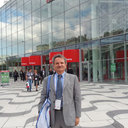Pattern of childhood neuronal migrational disorders in Oman.
کلید واژه ها
خلاصه
OBJECTIVE
To record the pattern of different neuronal migrational disorders (NMD) and their associated neurological conditions.
METHODS
The data were collected at the Child Neurology Services of Sultan Qaboos University Hospital, Oman, from January 1993 to September 2006 from all children with psychomotor delay and epilepsy, who underwent brain imaging (mostly MRI). The MR imaging was used for the diagnosis of a neuronal migration anomaly.
RESULTS
There were 86 cases of NMD. Corpus callosum agenesis and lissencephaly/pachygyria formed the major group. There were 48 cases of corpus callosum agenesis, and 16 cases of lissencephaly/pachygyria. Other disorders were 10 cases of heterotopias, 5 schizencephaly, 3 holoprosencephaly, 2 polymicrogyria, and one each of hemimegalencephaly, and hydranencephaly. Developmental delay was the most common associated finding noted in 80 (93%) cases. Sixty-seven (77.9%) cases had motor deficit. Forty out of 86 (46.5%) cases had epilepsy. Partial/partial complex seizures were the most common at 13 out of 40 (32.5%). Syndromic seizures were seen in 11 out of 40 (27.5%) cases. The seizures were controlled in only 3/40 (7.5%) cases.
CONCLUSIONS
The NMD constitute a significant number of child neurology patients with psychomotor delay and intractable epilepsy. Exogenic and genetic factors affecting the early embryonic and fetal development from sixth to twenty-sixth weeks of gestation result in NMD. Recent genetic studies are defining the underlying mechanism and these studies will help in early diagnosis and possible prevention of NMD.



